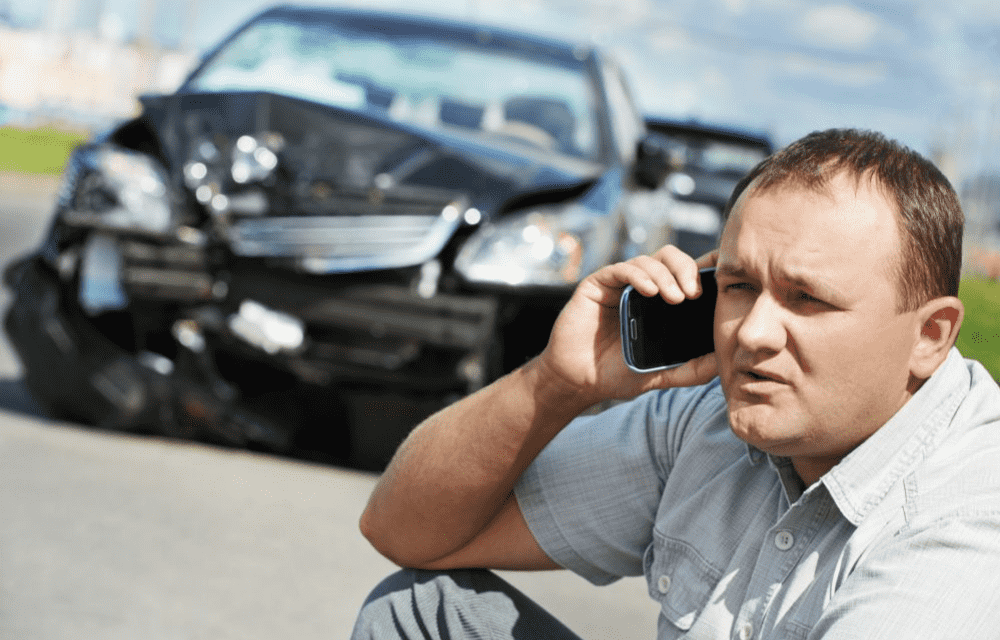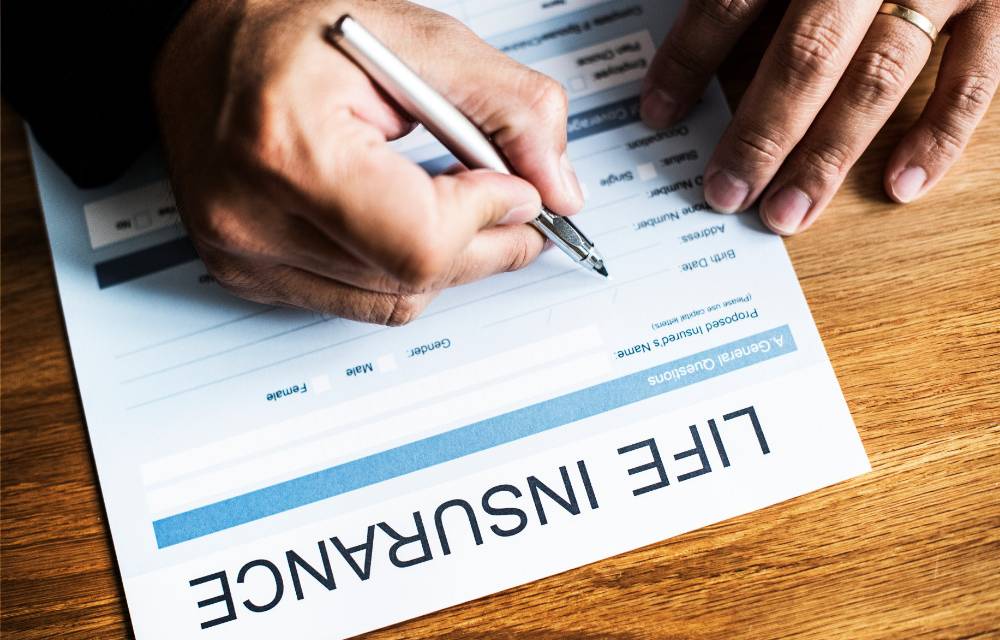
Property Damage Liability Insurance: Must-Have for Motorists
TABLE OF CONTENTS
Questions:
Property damage liability insurance is a form of car insurance that doesn’t actually protect your car. Instead, it protects other assets, namely, other people’s stuff (property). By extension, it also protects the money you have in the bank. Thus, consider this coverage something like a financial life jacket for vehicle owners — as it can keep you afloat financially after you cause a car accident.
KEY TAKEAWAYS
- 1
Property damage liability covers the cost of fixing someone else’s car or property that was damaged in an accident you caused.
- 2
Your property damage liability coverage never pays to fix your car after an accident.
- 3
You should consider your net worth when setting your property damage liability limit.
What is property damage liability insurance?
If you cause a car accident, you are then financially responsible for the outcome. Usually, that involves repairing the other driver’s car and, possibly, paying medical expenses if anyone was injured. Unfortunately, a bad accident can run up costs into the five- or six-figure range. In other words, more cash than most people has on hand. If you can’t or won’t cover the costs caused by the accident, you’ll face some nasty legal consequences. First, there’s a lawsuit, which is bad enough. Then comes liens, wage garnishments, or similar legal remediation which eat into your income to pay the debt.
Property damage liability insurance insulates you from those consequences; it pays for damage to someone else’s property that results from an accident you caused. The damaged property is usually the other car involved in the accident, but it could also be a mailbox, a fence, the front of someone’s house — or anything, really, that you drive into. It can even cover damaged personal items that were in the other driver’s car.1 Property damage liability is normally coupled with medical bodily injury, which helps cover medical costs for anyone who gets hurt in an accident that was your fault.
You are legally required to have property damage liability coverage on your vehicle in every U.S. state except New Hampshire.2 And though New Hampshire doesn’t have any minimum auto insurance requirements, the state does enforce your financial responsibility in car accidents. That means you’ll want to carry property damage liability insurance even in New Hampshire.
Split-limit coverage vs. combined, single-limit coverage
Property damage liability coverage, unfortunately, is not a blank check that covers any and all property-related expenses that arise from an accident. You are covered up to a stated dollar limit. There is no deductible, but if the expenses from the accident are higher than your policy’s limit, the overage comes out of your pocket. For this reason, many drivers choose to carry more property damage liability coverage than the minimum required by state law.
Property damage liability limits are generally stated together with the limits for medical bodily injury liability. Most of the time, you’ll see these limits expressed as a series of three numbers, such as 25/50/25. This is called split-limit coverage and each of the three numbers represents a different type of cap on what your insurer will pay.
The first number is the per-person cap on medical bodily injury claims. In 25/50/25 coverage, your insurer will pay up to $25,000 in medical costs for each person in a single accident.
The second number is the per-accident limit on medical bodily injury claims. In 25/50/25 coverage, your insurer will pay no more than $50,000 in total medical costs for a single accident — no matter how many people are injured. If four people get hurt and each one incurs medical expenses of $20,000, your insurer pays out a total of $50,000 and you have to cover the remaining $30,000.
The third number is your cap on property damage. In 25/50/25 coverage, your insurer will pay vehicle or property repair costs up to $25,000.
Combined Split Limit
You can also get what’s called combined, single-limit coverage. This does away with the three tiers of coverage and provides one stated limit per accident. If you have combined, single-limit coverage of $75,000, your insurer will pay for any combination of medical costs and property damage repairs up to $75,000 per accident. That could entail $15,000 in property damage and $60,000 in medical bills or the other way around. The composition doesn’t matter.
Combined, single-limit coverage is more expensive than split-limit coverage because it potentially enables higher payouts by the insurance company. Consider an accident that results in $60,000 in medical bills for one person, plus $15,000 in property damage. You would be fully covered with a $75,000 combined, single-limit liability policy. But to avoid out-of-pocket expenses on a split-limit policy, you’d need at least $60,000 in per-person medical bodily injury coverage. A 25/50/25 policy, for example, would only cover $25,000 of the medical bills plus the $15,000 in property damage. That leaves you responsible for the remaining $35,000.
What isn’t covered by property damage liability
Property damage liability pays to fix someone else’s property, but what about your property? Your property damage liability insurance offers no help whatsoever with the cost of fixing your car in an accident you caused. That’s actually the job of collision insurance.
In any given accident that results in damage to two cars, the at-fault driver needs property damage liability and collision insurance to pay for repairs to both vehicles.
There are two big takeaways here. One, property damage liability coverage is essential, but so is a collision. If you cause the accident, you need both. And two, drive safely. When you’re at fault, it can result in three different types of claims against your policy: property damage, medical bodily injury, and your own collision claim.
How much property damage liability are you required to have?
Each state defines the minimum amount of property damage liability coverage you need. These limits are in place to ensure drivers have the financial capacity to pay for damages they cause. That’s a good thing for you as a driver. For instance, if someone hits you and wrecks your car, you don’t want to be stuck with repair costs when you didn’t do anything wrong. You can protect yourself further with uninsured or under-insured motorist coverage, which steps in and foots the bill when the responsible driver doesn’t have enough insurance to cover the damages.
The table below shows the minimum levels of property damage liability required in each state.
State Property Damage Liability Minimums
State | Property Damage Minimum |
Alabama{{3}} | $25,000 |
Alaska{{4}} | $25,000 |
Arizona{{5}} | $10,000 |
Arkansas{{6}} | $25,000 |
California{{7}} | $5,000 |
Colorado{{8}} | $15,000 |
Connecticut{{9}} | $25,000 |
Delaware{{10}} | $10,000 |
Florida{{11}} | $10,000 |
Georgia{{12}} | $25,000 |
Hawaii{{13}} | $10,000 |
Idaho{{14}} | $15,000 |
Illinois{{15}} | $20,000 |
Indiana{{16}} | $25,000 |
Iowa{{17}} | $15,000 |
Kansas{{18}} | $25,000 |
Kentucky{{19}} | $25,000 |
Louisiana{{20}} | $25,000 |
Maine{{21}} | $25,000 |
Maryland{{22}} | $15,000 |
Massachusetts{{23}} | $5,000 |
Michigan{{24}} | $10,000 |
Minnesota{{25}} | $10,000 |
Mississippi{{26}} | $25,000 |
Missouri{{27}} | $10,000 |
Montana{{28}} | $20,000 |
Nebraska{{29}} | $25,000 |
Nevada{{30}} | $20,000 |
New Hampshire | NA |
New Jersey{{31}} | $5,000 |
New Mexico{{32}} | $10,000 |
New York{{33}} | $10,000 |
North Carolina{{34}} | $25,000 |
North Dakota{{35}} | $25,000 |
Ohio{{36}} | $25,000 |
Oklahoma{{37}} | $25,000 |
Oregon{{38}} | $20,000 |
Pennsylvania{{39}} | $5,000 |
Rhode Island{{40}} | $25,000 |
South Carolina{{41}} | $25,000 |
South Dakota{{42}} | $25,000 |
Tennessee{{43}} | $15,000 |
Texas{{44}} | $25,000 |
Utah{{45}} | $15,000 |
Virginia{{46}} | $15,000 |
Vermont{{47}} | $10,000 |
Washington{{48}} | $10,000 |
Washington, D.C.{{49}} | $10,000 |
West Virginia{{50}} | $25,000 |
Wisconsin{{51}} | $10,000 |
Wyoming{{52}} | $20,000 |
When you might need more property damage liability than is required
Carrying the minimum amount of property damage liability covers you from a legal perspective, but it doesn’t necessarily cover you financially. Expenses resulting from an accident can exceed your policy limits, and the other party involved may go after you for those overages if there’s something to gain. In other words, if you have money or assets, you’re a target for a lawsuit. Consequently, when you set your property damage liability limits, consider your net worth as a guide, because that’s what this form of insurance is in place to protect.
On the other hand, most property damage liability claims are fairly small in dollar amount. Data from the Insurance Information Institute indicates that the average property damage liability claim in 2018 was only $3,841.53 That’s well within the legal minimums in the states that require property damage liability insurance. The problem with that line of thought, however, is that while it’s more likely you’ll have an “average” accident, there’s still a small risk of the hugely expensive accident. In other words, the black swan accident is the one you want to protect against.
The cost of property damage liability coverage
If you have a good driving history, property damage liability insurance is not terribly expensive. While higher limits do carry higher costs, the premium increases are relatively small compared to the added coverage amount. According to Value Penguin, a New York driver with a 2014 Toyota Camry can purchase $10,000 of property damage liability coverage for about $136 annually.
However, to increase that coverage limit to $100,000, the premium only goes up to about $150 per year. Note that property damage liability is typically sold along with medical bodily injury, which has an additional cost.
Protect yourself with ample property damage liability coverage
You shouldn’t be out on open water without a life jacket. Likewise, you shouldn’t drive your car without property damage liability coverage. Doing so is probably illegal. But it also puts you at risk of drowning (figuratively) in accident-related expenses.
Property damage liability insurance is cheap enough that there’s no reason not to have it. If you do get quotes and find them to be pricey, it’s because you have a history of moving violations and/or your vehicle is too sporty. Therefore, work on cleaning up your driving record and consider trading in the fast car for something more subdued.
- Cover. (2019, December 05). What Is Property Damage Liability And Why Do I Need It? Retrieved May 06, 2020 from https://cover.com/blog/property-damage-liability/
- Your guide to understanding auto insurance in the granite state. (n.d.). Retrieved May 05, 2020 from https://www.nh.gov/insurance/consumers/documents/nh_auto_guide.pdf
- Automobile Insurance FAQs. (n.d.). Retrieved May 08, 2020 from https://www.aldoi.gov/Consumers/AutoFAQ.aspx
- DMV. (n.d.). Retrieved May 08, 2020 from https://doa.alaska.gov/dmv/faq/manins.htm
- Vehicle insurance information. (n.d.). Retrieved May 08, 2020 from https://azdot.gov/motor-vehicles/vehicle-services/vehicle-insurance-information
- Consumers FAQ. (n.d.). Retrieved May 08, 2020 from https://insurance.arkansas.gov/pages/consumer-services/consumer-services/consumers-faq/
- California Department of Motor Vehicles. (n.d.). How much liability insurance am I required to have? Retrieved May 08, 2020 from https://www.dmv.ca.gov/portal/dmv/?1dmy=
- Mandatory automobile insurance in Colorado. (n.d.). Retrieved May 08, 2020 from https://leg.colorado.gov/content/mandatory-automobile-insurance-colorado
- Automobile coverage information. (n.d.). Retrieved May 08, 2020 from https://portal.ct.gov/CID/General-Consumer-Information/Automobile-Coverage-Information
- The State of Delaware – Division of Motor Vehicles. (n.d.). Vehicle services registration. Retrieved May 08, 2020 from https://dmv.de.gov/VehicleServices/registration/index.shtml?dc=ve_reg_insurance
- Florida insurance requirements. (2019, September 25). Retrieved May 08, 2020 from https://www.flhsmv.gov/insurance/
- Automobile insurance. (n.d.). Retrieved May 08, 2020 from https://oci.georgia.gov/insurance-resources/auto
- Motor vehicle insurance information. (n.d.). Retrieved May 08, 2020 from https://cca.hawaii.gov/ins/consumers/mvi/
- Required Auto Coverage. Idaho Department of Insurance. Retrieved January 22, 2023, from https://doi.idaho.gov/consumers/auto-insurance/required-auto-coverage/
- Consumer auto insurance. (n.d.). Retrieved May 08, 2020, from https://insurance.illinois.gov/AutoInsurance/ConsumerAuto.html
- Proof of financial responsibility. (n.d.). Retrieved May 08, 2020, from https://www.in.gov/bmv/2574.htm
- Automobile insurance. (n.d.). Retrieved May 08, 2020, from https://iid.iowa.gov/automobile-insurance
- Auto insurance. (n.d.). Retrieved May 08, 2020, from https://kansasmoney.gov/categories/auto-insurance
- Mandatory insurance. (n.d.). Retrieved May 08, 2020, from https://drive.ky.gov/Motor-Vehicle-Licensing/Pages/Mandatory-Insurance.aspx
- Consumer’s guide to auto insurance. (n.d.). Retrieved May 07, 2020, from https://www.ldi.la.gov/docs/default-source/documents/publicaffairs/consumerpublications/auto-insurance-guide.pdf
- A Consumer's Guide to Personal Auto Insurance. (n.d.) Maine Bureau of Insurance. Retrieved January 22, 2023, from https://www.maine.gov/pfr/insurance/sites/maine.gov.pfr.insurance/files/inline-files/consumers-guide-to-personal-auto-insurance.pdf
- User, A. (2020, March 31). Insurance requirements for Maryland vehicles. Retrieved May 08, 2020, from http://www.mva.maryland.gov/vehicles/insurance/
- Understanding auto insurance. (n.d.). Retrieved May 08, 2020, from https://www.mass.gov/service-details/understanding-auto-insurance
- Consumer counselor. (n.d.). Retrieved May 07, 2020, from https://www.michigan.gov/documents/cis_ofis_ip202_25083_7.pdf
- Auto insurance guide. (n.d.). Retrieved May 07, 2020, from http://mn.gov/commerce-stat/pdfs/auto-insurance-guide.pdf
- Auto insurance. (n.d.). Retrieved May 08, 2020, from https://www.mid.ms.gov/consumers/auto-insurance.aspx
- Insurance information. (n.d.). Retrieved May 08, 2020, from https://dor.mo.gov/drivers/insurinfo.php
- Insurance and verification. (n.d.). Retrieved May 08, 2020, from https://dojmt.gov/driving/insurance-and-verification/
- Auto liability insurance. (n.d.). Retrieved May 07, 2020, from https://doi.nebraska.gov/sites/doi.nebraska.gov/files/doc/AutoLiabilityInsuranceIFPD.pdf
- Nevada insurance requirements. (n.d.). Retrieved May 08, 2020, from https://dmv.nv.gov/insurance.htm
- Standard auto insurance policy. (n.d.). Retrieved May 08, 2020, from https://www.nj.gov/dobi/division_consumers/insurance/standardpolicy.html
- Insurance. (n.d.). Retrieved May 08, 2020, from http://www.mvd.newmexico.gov/vehicle-insurance.aspx
- Minimum auto insurance requirements. (n.d.). Retrieved May 08, 2020, from https://www.dfs.ny.gov/consumers/auto_insurance/minimum_auto_insurance_requirements
- NCDOT. (n.d.). Retrieved May 08, 2020, from https://www.ncdot.gov/dmv/title-registration/insurance-requirements/Pages/default.aspx
- Auto — the basics. (n.d.). Retrieved May 07, 2020, from https://www.nd.gov/ndins/auto
- Driver license & ID card. (n.d.). Retrieved May 07, 2020, from https://www.bmv.ohio.gov/dl-mandatory-insurance.aspx
- Auto insurance FAQs. (n.d.). Retrieved May 07, 2020, from https://www.oid.ok.gov/faqs/
- Insurance Requirements. (n.d.). Retrieved May 07, 2020, from https://www.oregon.gov/odot/dmv/pages/driverid/insurance.aspx
- Automobile insurance guide. (n.d.). Retrieved May 07, 2020, from https://www.insurance.pa.gov/Documents/auto_guide.pdf
- Dwyer, E. K. (n.d.). Consumers guide to auto insurance. Retrieved May 07, 2020, from https://dbr.ri.gov/documents/divisions/insurance/property_casualty/com_guide-auto_insur.PDF
- Automobile insurance. (n.d.). Retrieved May 07, 2020, from https://www.doi.sc.gov/588/Automobile-Insurance
- Automobile insurance. (n.d.). Retrieved May 07, 2020, from https://dlr.sd.gov/insurance/general_guidance/auto.aspx
- Why you should have auto insurance. (n.d.). Retrieved May 07, 2020, from https://www.tn.gov/revenue/title-and-registration/drive-insured-tennessee/for-drivers/why-you-should-have-auto-insurance.html
- Automobile insurance made easy. (n.d.). Retrieved May 07, 2020, from https://www.tdi.texas.gov/pubs/consumer/cb020.html
- Motor vehicle liability policy minimum limits. (n.d.). Retrieved May 07, 2020, from https://le.utah.gov/xcode/Title31A/Chapter22/31A-22-S304.html?v=C31A-22-S304_1800010118000101
- Insurance requirements. (n.d.). Retrieved May 07, 2020, from https://www.dmv.virginia.gov/vehicles/insurance.html
- Vermont laws. (n.d.). Retrieved May 07, 2020, from https://legislature.vermont.gov/statutes/section/23/011/00800
- Office of the Insurance Commissioner Washington State. (n.d.). Retrieved May 07, 2020, from https://www.insurance.wa.gov/washington-states-mandatory-automotorcycle-insurance-law
- Vehicle Insurance. (n.d.). Retrieved May 07, 2020, from https://dmv.dc.gov/service/vehicle-insurance
- Mandatory compulsory insurance requirements. (n.d.). Retrieved May 07, 2020, from https://www.wvinsurance.gov/consumerservices/Consumer-Services/Mandatory-Limits
- State of Wisconsin FAQs auto insurance. (n.d.). Retrieved May 06, 2020, from https://oci.wi.gov/Documents/Consumers/PI-233.pdf
- Auto insurance FAQs. (n.d.). Retrieved May 06, 2020, from http://doi.wyo.gov/consumers/types-of-insurance/auto/auto-insurance-faqs
- Facts + statistics: Auto insurance. (n.d.). Retrieved May 06, 2020 from https://www.iii.org/fact-statistic/facts-statistics-auto-insurance
TABLE OF CONTENTS


Trying to find the best insurance?
We'll help you find the policy that offers the best value for your situation.
Further Reading

Navigating the Digital Insurance Landscape Considerations
A look at the immense value and high customer lifetime potential within the insurance sector.
Read article

When is Term Life Insurance Worth it?
Decide if term life's advantages are worth it: compare whole vs term life insurance, assess top term providers, and delve into in-depth reviews.
Read article

Insurance Binder: Bridging Between Coverage and Confirmation
From car loans to rental properties, insurance binders are required in a variety of situations. Discover the ins and outs of these essential documents.
Read article

Haven Life Review: Providing Prudent and Protective Policies
Uncover the benefits and drawbacks of Haven Life's term insurance policies, along with eligibility details, pricing, and customer feedback..
Read article
Start Comparing Quotes
Search from our learning center to learn everything from how to easily switch your car insurance to the ins and outs of home insurance.
Fill out just one form and get multiple quotes!


